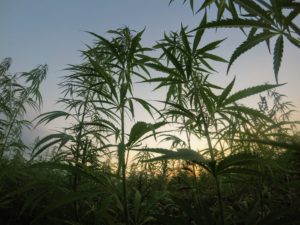If you look at grow lights, or hash, or even most of the weed itself from 20-30 years ago, you will likely appreciate how far it has all come since then. Comparing today’s tech with how it used to be is not just unfair, it is not particularly useful.
For some reason, though, when it comes to autoflowering cannabis seeds and strains, lots of people still have the earliest versions of that tech in mind when they form (and spout) their opinions on it even though (like the rest of cannabis culture) it has come a long way over the years.
One of the biggest lessons that you learn as a cultivator is that you simply cannot cut corners but autoflower strains do exactly that. So, it should come as no surprise that the results of taking those strains to harvest are usually a mixed bag of pros and cons.
One thing we can tell you for sure is that you will never find an autoflower strain in a Beard Bros. Pharms cultivation operation but that does not necessarily mean that there is no place for them in any op.
In Part 4 of our ongoing Grow Your Own Cannabis series, we’ll shine some light on autoflower tech and see if there is a time and a place for it, or not.
What Does Autoflower Mean?
Most cannabis on the market today is categorized loosely as “photoperiod”, meaning that the plant seeks cues from changes in light sources to know when to “flip” from the vegetative stage to the flowering stage.
 For sungrown cannabis, this flip occurs naturally with the changing of the seasons and the lengthening and shortening of the daylight hours between spring and fall. Greenhouse growers can manipulate that change using light deprivation techniques to trigger flowering and pull multiple harvests per year. Indoor growers, obviously, can “play God” and control lighting quite literally with a flip of a switch allowing for a perpetual harvest if they have enough space to work with.
For sungrown cannabis, this flip occurs naturally with the changing of the seasons and the lengthening and shortening of the daylight hours between spring and fall. Greenhouse growers can manipulate that change using light deprivation techniques to trigger flowering and pull multiple harvests per year. Indoor growers, obviously, can “play God” and control lighting quite literally with a flip of a switch allowing for a perpetual harvest if they have enough space to work with.
Autoflowering cannabis strains, on the other hand, require no external cues (ie. light, or a lack of) in order to flip into the flowering phase. They have a biological clock that ticks down to a destined day and then the plant automatically begins to produce buds, as the name implies.
Though this may sound like some mad science concocted in a laboratory somewhere, it’s just another example of the resilience of life to adapt and survive in nature.
Wild ditchweed-grade cannabis plants classified as Ruderalis spread their original roots in the unforgiving soils and climates of Russia, Central Asia, and Eastern Europe, adapting to the cold conditions and shortened growing season by evolving their autoflowering trait to ensure that the plant would reach maturity and reproduce before the weather got too severe each year.
If it sounds like we are talking about “hemp”, that’s not too far off. In fact, the boom in legal hemp farming has led to a resurgence in demand for autoflower strains. Favored by hemp farmers for not only their ability to begin flowering faster regardless of sunshine but also for their reduced levels of THC, you can see how what one farmer may see as a pro, another may see as a con. So, let’s break those down a bit further.
The Pros & Cons of Growing Autoflower Cannabis
FASTER LIFE CYCLE
Pros: For growers who must plant outside, but do not have the ideal climate as you might find in The Emerald Triangle in Northern California, the accelerated lifecycle of autoflower cannabis can be the difference between budrot and a successful harvest. Most autoflower strains boast a 7-10 week TOTAL grow cycle. That is veg and flower combined. Compare that to seven weeks just in flowering for many traditional / photoperiod cultivars.
Cons: Due to that accelerated plant lifespan, the farmer is left with very little time to make corrections should they need to during the growing cycle. Traditional cannabis strains allow plenty of time for pruning, training, and dialing in nutrients, whereas autoflower strains are full speed ahead and that’s not always good. The fast timeline also leads to the next topic…
SMALLER PLANT SIZE

Pros: Most autoflower cannabis plants will top out under four feet tall. When growing outdoors, this favors “guerilla growers” who may be trying to avoid nosy neighbors or the prying eyes of the law. Indoor growers also tend to favor shorter, bushier phenotypes (hello, OG Kush!) as well when limited by ceiling height and hanging lights. Some “microgrowers” have even harvested autoflower pot plants cultivated in computer towers!
Cons: Of course, smaller plants equal smaller buds and smaller overall yields. Additionally, the combination of small plant size and accelerated growth makes it pointless to try to takes cuts or clones from an autoflower cannabis plant.
SIMPLE SCHEDULES FOR LIGHTING
Pros: As mentioned already, autoflower cannabis strains do not rely on changes in the number of hours of light that they receive each day in order to trigger their flowering phase. However, they do still need light. Most commonly, autoflower cannabis farmers tend to stick to 18 hours on, 6 hours off for their lighting schedule. More hours of light can be supplemented each day to promote more robust growth. Some farmers even run their lights 24 hours a day.
Cons: When compared to a traditional indoor grow, the electricity costs for an autoflower crop can potentially be just as high even though the growth cycle is cut roughly in half. This is because photoperiod cultivars demand a gradual shift in lighting schedules, spending many days in a 12 on, 12 off schedule which obviously draws less power than a constant 18/6 (or higher).
HIGHER THAN AVERAGE CBD LEVELS
Pros: Sharing roots with what we now refer to a “hemp” Ruderalis-derived autoflower cannabis strains share many of the same characteristics with industrial hemp – a rugged, resilient plant that tends to resist pests, molds, and plant pathogens better than more exotic cannabis cultivars. This favors novice growers who may not be able to identify or solve such problems if they were to arise during a more traditional grow.
Cons: Of course, shopping for weed based strictly on advertised levels of THC in a product is not the right way to do it, and there are amazing cannabis cultivars that express <20% THC, but you do need some! Unless the crop is being dedicated to making CBD meds, of course. Yes, there are some autoflowering strains these days boasting chart-topping THC levels, but the accelerated growth cycle has to come at a cost somewhere, and that is usually deducted from the full-spectrum Entourage Effect you’d experience from full-term cannabis.
Should I Use Autoflower Cannabis Strains?
In our view, autoflowering cannabis strains do have a use in some circumstances.
Autoflower seeds are a “great breeding tool” for novice pollen-chuckers looking to get serious.
If someone wants to take breeding super serious it’s a great place for beginners to learn how to actually breed, it’s a clear observable trait that won’t be stable in its first f1 form. Takes a few generations in to get autoflowers to be consistently auto. It’s evolution in action.
Autoflowering cannabis is likely also the main ingredient in a vast majority of pre-filled vape carts on the market today. The crude extraction and distillation process involved in making those products doesn’t care that the buds fueling it were potentially deficient in terps, or broad-spectrum cannabinoids, or overall structure.
We have also heard plenty of rumors of hemp farmers peppering their fields with autoflowering cannabis plants that are richer in THC which are harvested separately and hustled to the streets to offset the L’s those farmers are taking on their legal crops.
And, as we have alluded to, they can be a lifesaver for a first-time cannabis farmer. Their flexibility in lighting and nutrient demands, their quick growth cycle, their discreet size, and the availability of new, more potent autoflower cannabis strains than ever before makes them a no-brainer for those with little or no experience.
Obviously, laws are subject to change and, obviously, Beard Bros. Pharms is NOT a legal adviser. Additionally, as is the case here in California, state law can often conflict with local laws, ordinances, or bans so be sure to brush up on the specific regulations for your particular municipality. Information contained in this website is intended as general educational information only. The information contained on this website is not legal advice. It should not be construed as legal advice and should not be relied upon as such. Obviously.
















